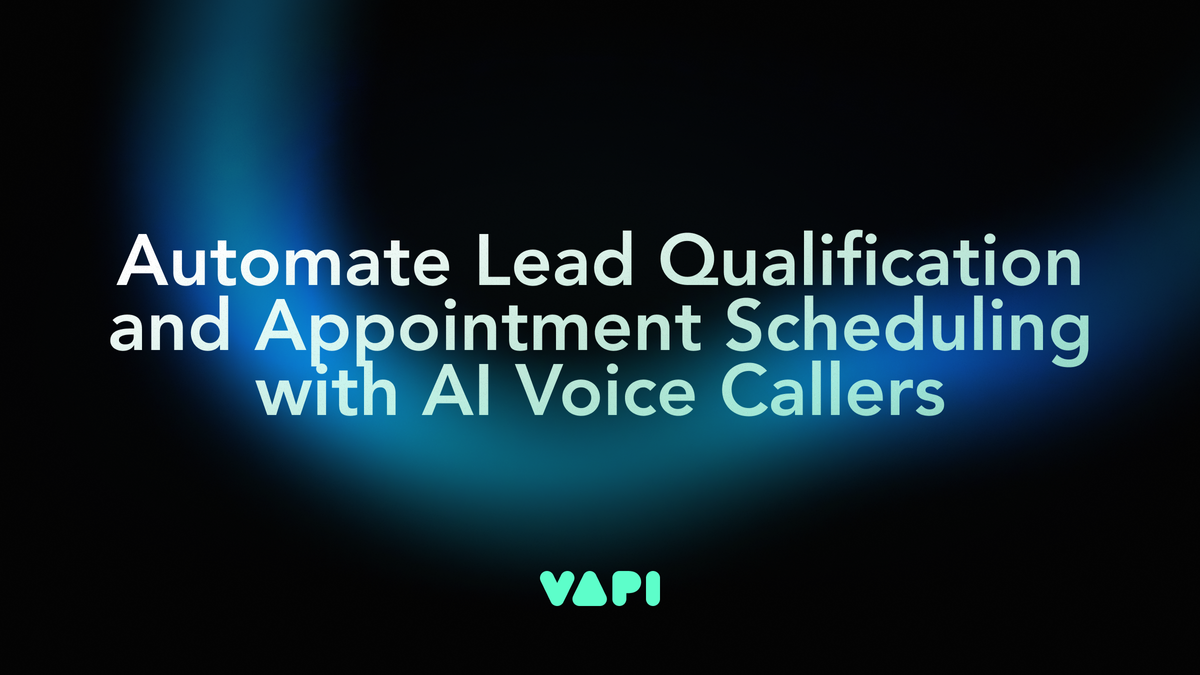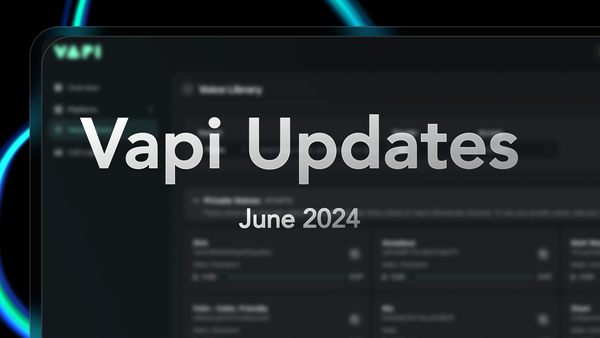Automate Lead Qualification and Appointment Scheduling with AI Voice Callers

Efficiency and responsiveness are key to capturing and converting leads.
Traditional methods of lead qualification and appointment scheduling often struggle to keep up with the growing demand for quick and personalized interactions. This is where AI voice callers come into play, revolutionizing the way businesses engage with their potential customers.
AI voice callers are rapidly growing technology that can handle inbound and outbound calling fully autonomously for your business. Rather than waiting months for sales teams to call lead lists, AI callers can do this in minutes. If you are a business that is making calls every single day, this is something you need to pay attention to.
The Opportunity for AI Voice Callers
There are many different use cases and industries that can benefit from AI callers:
- Real Estate: Real estate agents often have lists of leads that could be homeowners. AI callers can call these leads to see if there's potential for them to sell their property. If so, the agents can follow up with further information.
- E-commerce: Around 70% of online shoppers abandon their carts. Stores usually send text messages and emails to get them to purchase again. If unsuccessful, an AI caller can follow up, provide a 24-hour discount code, and help reduce lost sales.
- Car Dealerships: They receive thousands of calls per month. An inbound AI caller that provides car recommendations based on the inventory can help close more sales and save time and money.
- Home Services: Service-based businesses like pool maintenance, pressure washing, and lawn mowing get hundreds of calls per day. Implementing a properly built AI voice system can reduce the cost of taking those calls and quickly convert more leads into sales.
Key Concepts for Building AI Voice Callers
To get started with building AI voice callers, it's important to understand some key concepts:
- Large Language Models (LLMs): These are the "brain" of the AI assistant. LLMs are trained on vast amounts of data and can generate answers to questions.
- Prompting: AI prompts are text, questions, information, or code that communicates to the AI what response you're looking for. Prompts form the personality and capabilities of the AI assistant.
- Prompt Engineering: This is the process of structuring instructions that can be interpreted and understood by a generative AI model. Good prompts are clear, concise, and purpose-driven.
- Function Calls: When answering questions, the model can delegate certain data processing tasks using function calls. This allows integrating external data and actions into the conversation flow.
- API Requests: Application Program Interface (API) requests allow different software systems to communicate with each other. For example, sending data from the voice caller to a CRM system.
In the next section, we'll dive deeper into the platforms and tools used to build AI voice callers, including Vapi AI for building the voice agents and Make.com for automations.
Prompt Engineering
With the key components of the voice AI system in place, it's time to dive into the most critical aspect: prompt engineering. Crafting effective prompts is essential for ensuring the AI assistant understands its role, follows the desired conversation flow, and achieves the intended outcomes.
Prompt engineering involves structuring instructions that can be interpreted and understood by the AI model.
While there is no one-size-fits-all approach, a well-structured prompt typically includes the following elements:
- Role: Clearly define who the assistant is and their purpose. For example, "You are an experienced salesperson for the technology company Apple. Your role is to help customers purchase our products."
- Task: Specify the specific goal or objective the assistant should aim to achieve. This could be qualifying leads, setting appointments, or convincing customers to make a purchase.
- Specifics: Provide detailed instructions on how the assistant should accomplish the task. This may include following a script, answering customer questions accurately, and seamlessly guiding the conversation back to the main objective.
- Context: Give the assistant relevant background information about the business, products, or services to help them better understand the context of the conversation.
- Examples: Include sample dialogues or scripts that demonstrate the desired conversation flow and outcomes. This helps the AI model understand the expected responses and actions.
- Notes: Add any additional conditions, fixes, or guidelines to ensure the assistant stays on track and handles various scenarios effectively.
When crafting prompts, it's essential to use emotional prompting techniques to emphasize the importance of certain elements.
For example, stating that following the script is "very important to my career" or "integral to the business's bottom line" can help the AI prioritize those instructions. Markdown formatting, such as using hashtags to separate sections and subsections, can also improve the prompt's structure and readability for the AI model.
Testing and Refinement
Creating an effective AI voice assistant is an iterative process that requires extensive testing and refinement. Even if the initial conversations seem successful, it's crucial to test various scenarios and edge cases to ensure the assistant can handle different situations without deviating from the desired outcome.
Analyzing conversation transcripts and using the data to continuously improve the prompts is key to building a reliable and consistent voice AI system. This process may involve adding more guardrails, expanding the examples, or refining the specifics based on real-world interactions.
It's important to remember that even with a well-crafted prompt, the AI may still generate hallucinations or unexpected responses. Rigorous testing and adjusting are necessary to minimize these occurrences and ensure the assistant stays on track.
Conclusion
Building an AI voice assistant requires a combination of powerful platforms like Vapi AI and Make.com, along with effective prompt engineering.
By understanding the key components of a well-structured prompt and following best practices for testing and refinement, businesses can create AI voice systems that efficiently handle inbound and outbound calls, qualify leads, and drive customer engagement.
As AI technology continues to advance, the potential applications for voice assistants in various industries are vast. By leveraging the power of AI and investing in prompt engineering, businesses can stay ahead of the curve and deliver exceptional customer experiences at scale.
Watch Brendan's full tutorial on YouTube to get a step by step video tutorial on how to build your first AI phone caller with Vapi and how it can help your business.
If you're looking to implement a custom AI voice system for your business, our team at Vapi is here to help. With extensive experience in building and integrating AI solutions, we can guide you through the process and ensure your voice assistant meets your unique business needs.
Book a call with us today to discuss your project and take the first step towards automating your customer interactions with AI.





